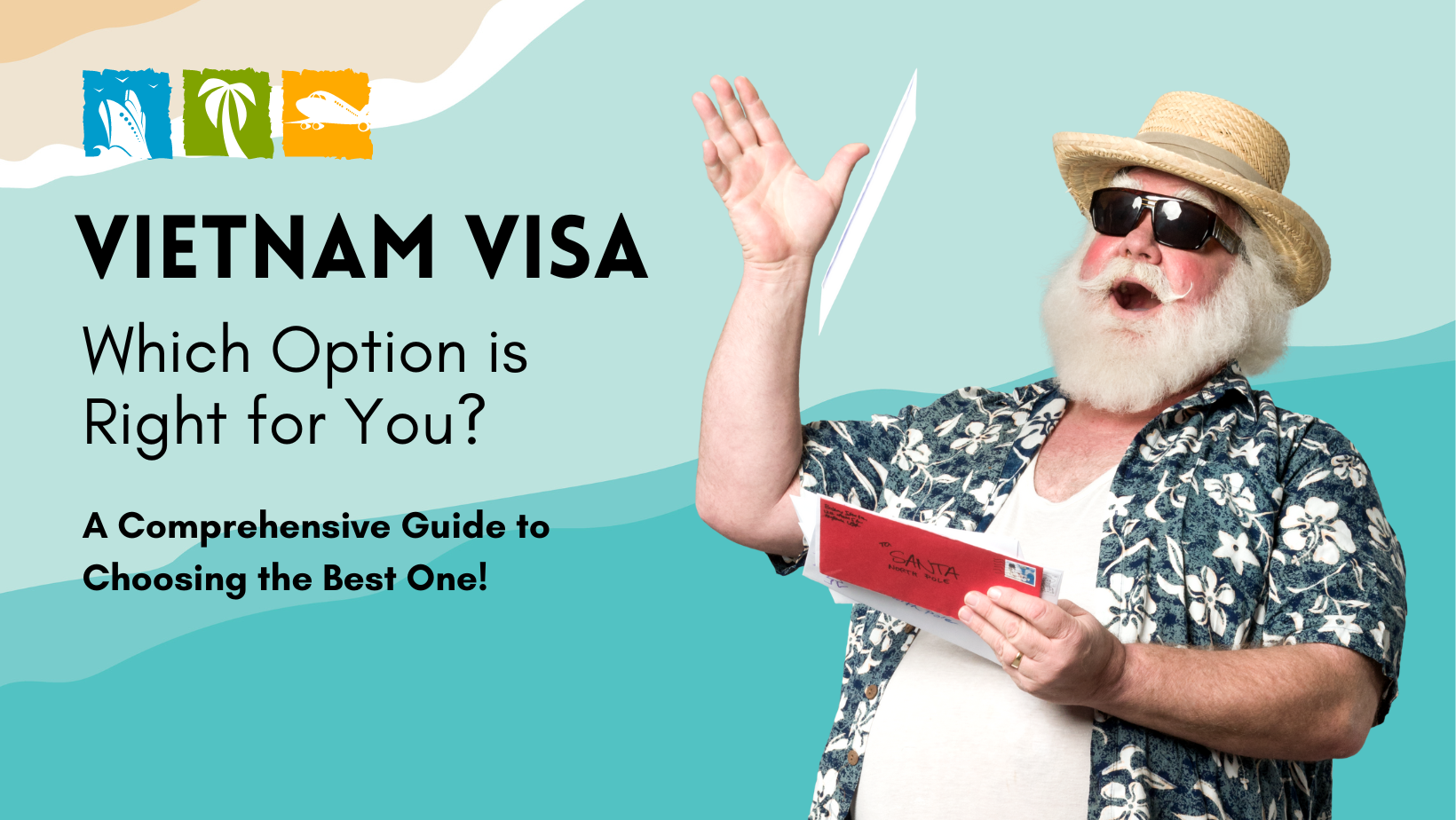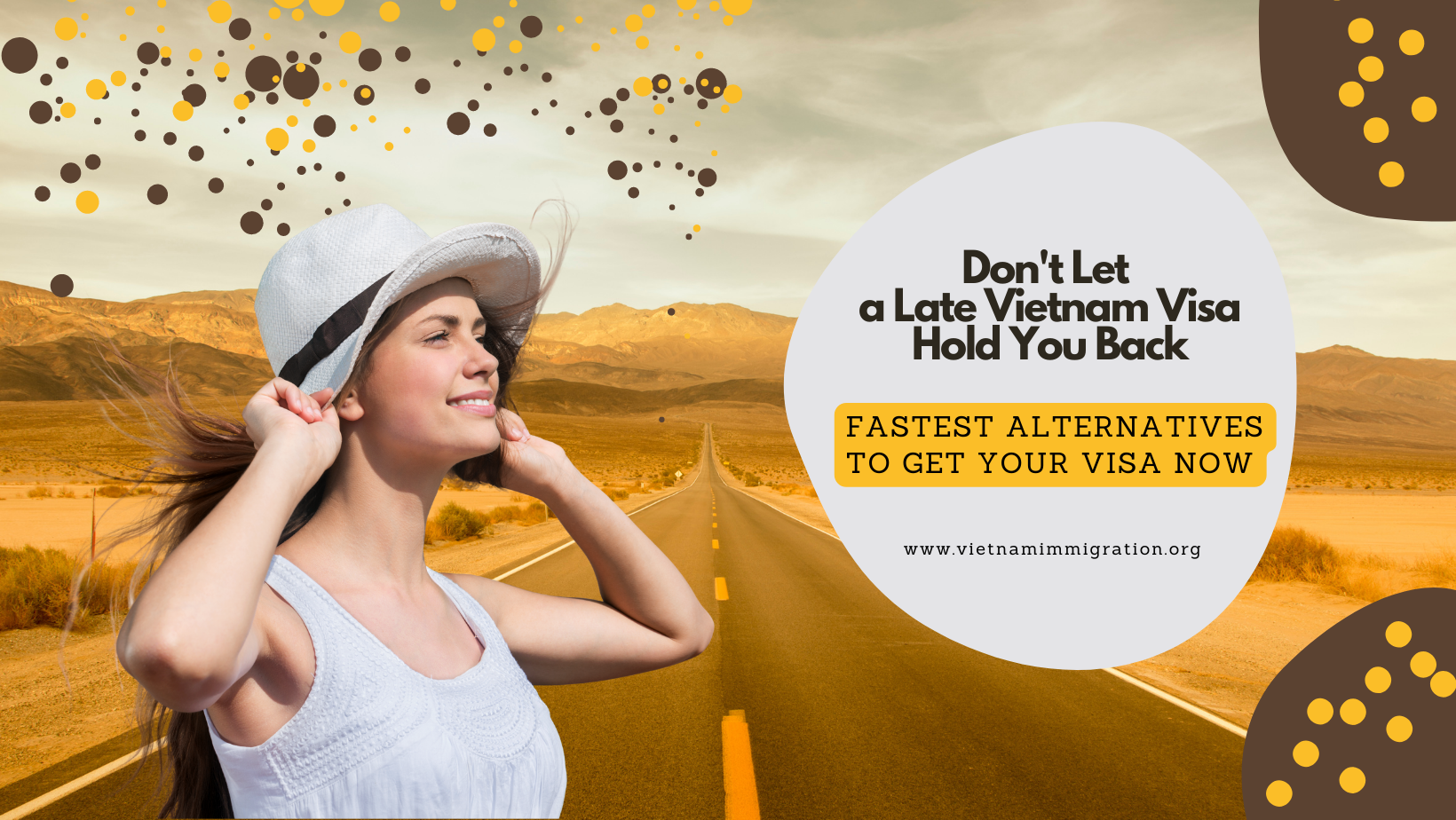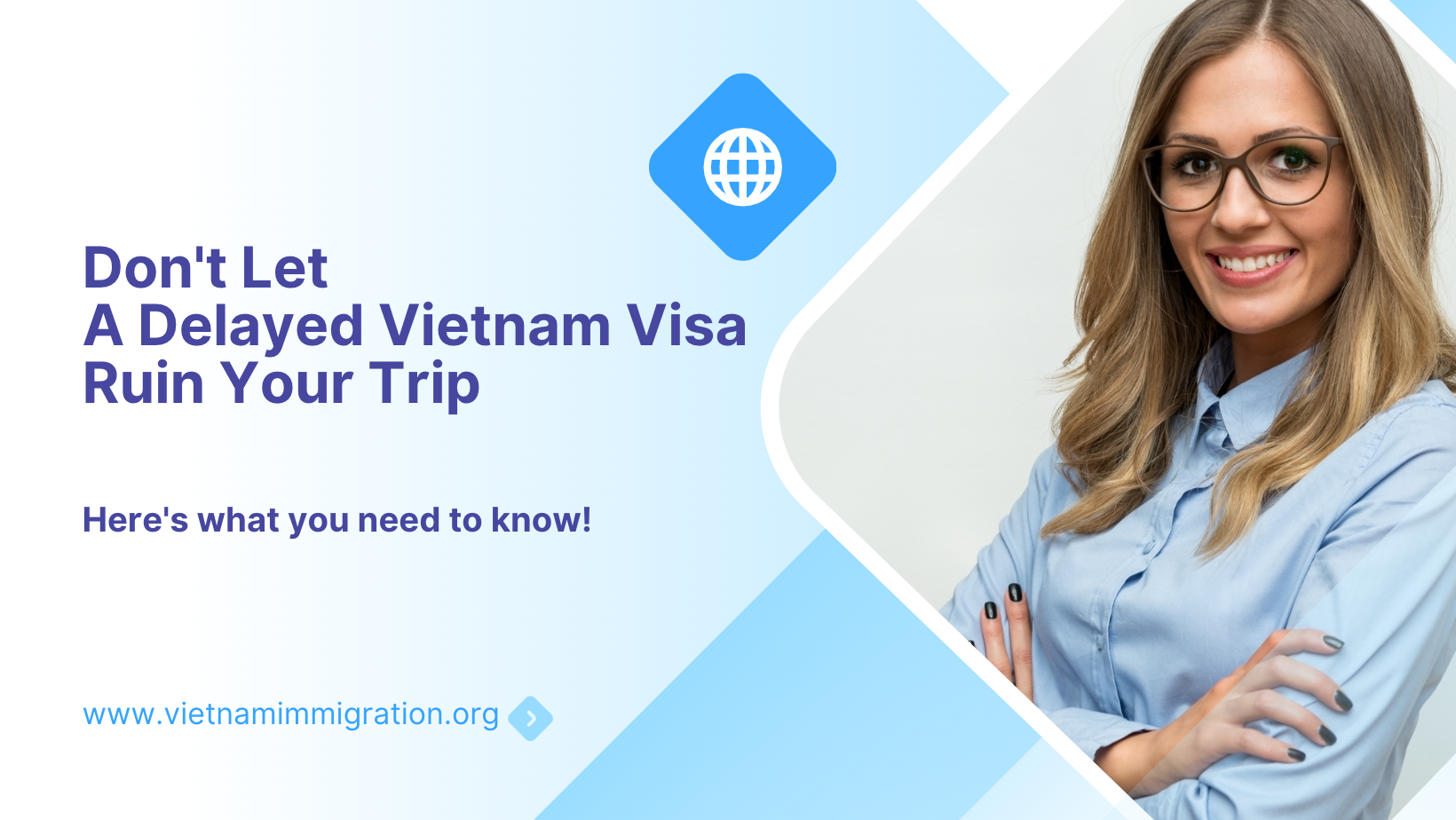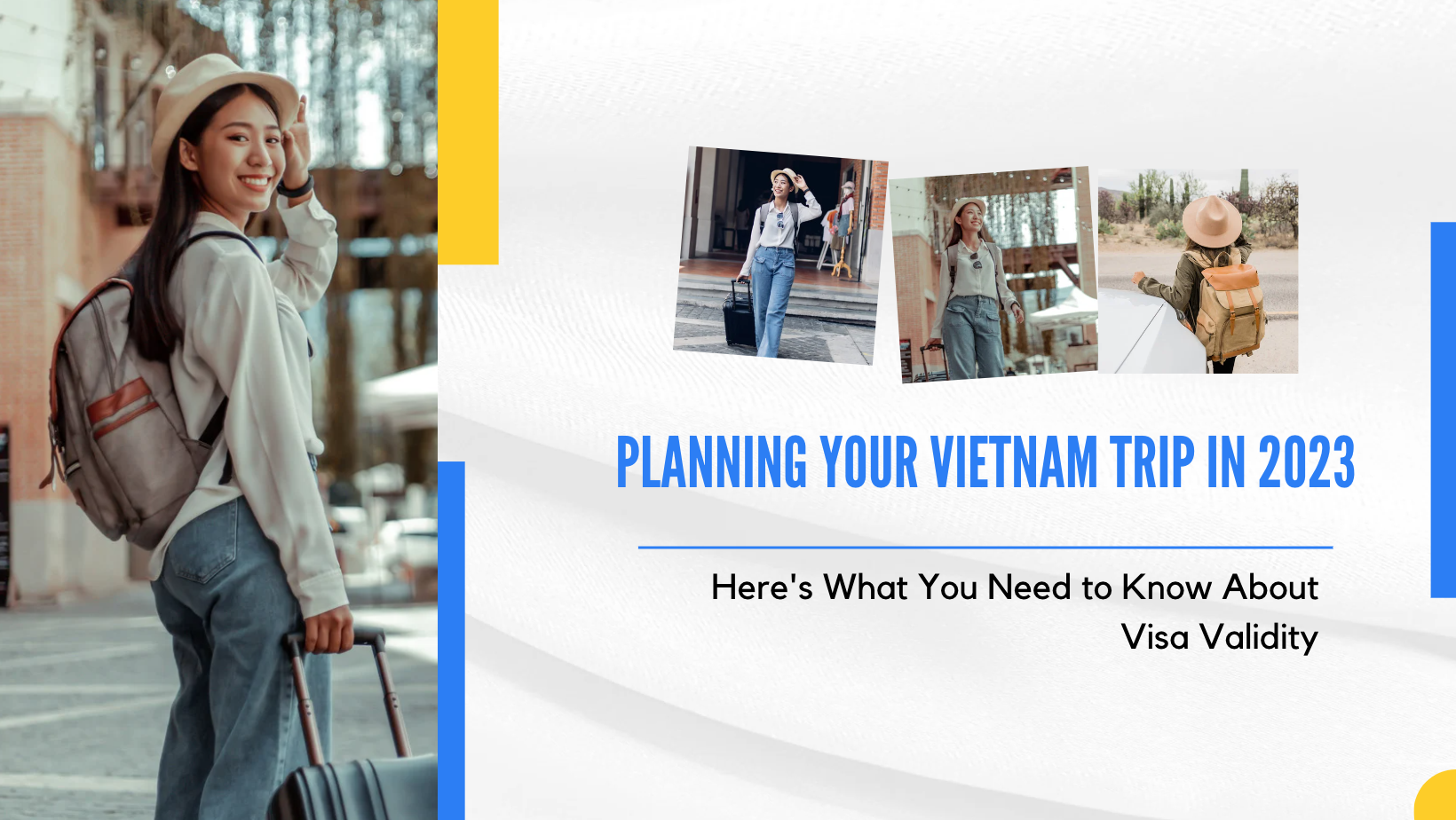Vietnam is a popular destination for tourists and business travelers, and obtaining a visa is essential to planning your trip. However, unexpected situations sometimes come, and your Vietnam visa application is late.

If you’re planning a trip to Vietnam, one of the most important things you’ll need to consider is your visa. You should apply for a visa if you are not on the Vietnam visa-free list. Several visa options are available; knowing which one is right for you can take time. In this comprehensive guide, we’ll look at the three main Vietnam visa options, the Vietnam E-visa, Vietnam Embassy Visa, and Vietnam Visa On Arrival, and help you choose the best one for your needs.
The Vietnam E-visa is an electronic visa you can apply for and receive online. The E-visa is valid for 30 days and is a single-entry visa, meaning you can only enter the country once.
Before applying for an e-visa, the applicant should check their country’s name in the list of eligible Nationals for the Vietnam e-visa.
– Your passport must have at least six months of validity remaining.
– You must have a valid email address to receive your visa. Please check your email, including your spam box, to ensure you get an update about your e-visa.
– Prepare A digital copy of your passport + latest portrait photo to upload for the e-visa application form online. See Photo And Passport Requirements For Applying Vietnam E-visa
Fee and process time for Vietnam e-visa: It costs US$25 and is non-refundable. It takes three working days to process your e-visa. And no change or amendment after your e-visa application is submitted.
Now, let’s go to the official website of the Vietnam Immigration Authority to apply for an e-visa: https://evisa.xuatnhapcanh.gov.vn/
– You can apply for the visa online, which is convenient and saves time.
– The visa fee is lower compared to other visa options.
– You can receive your e-visa via email, so you don’t need to visit an embassy or consulate.
– The Vietnam E-visa is only valid for 30 days, cannot extend, and is a single-entry visa, which may not be suitable for long trips or multiple entries.
– The E-visa application process may take longer if you apply for your e-visa directly at the government’s official website. Sometimes it takes two weeks, so apply it at least two weeks before your trip departure.
– The e-visa fee is non-refundable, with no change or amendment after submission. Correctly making your e-visa application would be best, or you must pay for the new one.
– The government website for Vietnam e-visa does not support online. Therefore no answer if you have any doubts or questions.
A Vietnam Embassy Visa is one you apply for at a Vietnam embassy or consulate in your home country.
The embassy or consulate usually issues tourist visas for 30 days. Suppose you want a business visa or visa for longer than 30 days. In that case, they will ask to provide an approval letter from Vietnam Immigration Authority. To get this kind of visa approval letter, you should contact a travel agent or visa agent in Vietnam; they will sponsor you to get it from the authority. They will send a scanned copy to your email and fax it to the embassy or consulate.
Before applying for the visa in person at a Vietnam embassy or consulate, please ensure your passport has at least six months of validity remaining and at least two blank pages.
Find the official website of the embassy or consulate to download the visa application, fill it out, and attach a portrait photo to it. You should read and follow the visa regulation from the official website of the embassy or consulate or reach out via phone to ask to make sure everything ok before you go.
Last but not least, you should make an appointment for your visa application before you go to the embassy or consulate.
Here is a List of Embassy & Consulate Offices of Vietnam in the World (Including Address, Phone, Email, Website & Map)
Processing time & fee : It varies depending on the embassy or consulate. Please get in touch with them for further details.
– You have an actual visa stamped on your passport; it’s exciting.
– It is very convenient for those who live near the location embassy or consulate.
– Apply for the visa in person, so you can ask for help and advice if needed.
– The visa application process may be time-consuming and hassle, as you need to visit an embassy or consulate in person.
– You may have to meet the long queue if it falls in peak season.
– You must pay at least two visits to the embassy or consulate location, one for submission and one to receive the visa.
– The visa fee may be higher compared to other visa options.
Visa On Arrival is an option for visitors living far from the location of the Vietnam embassy or consulate. Like its name, it allows obtaining a visa upon Arrival at one of Vietnam’s international airports.
To get a Visa On Arrival in Vietnam, you must first obtain a visa approval letter from the Vietnam Immigration Authority. Find a website or contact a travel agent in Vietnam to arrange that kind of visa letter.
Find a trustworthy website or travel agent, fill out the form online with them, pay them the fee then they will sponsor with authority to get that letter and send it to your email. Print a copy of the visa approval letter to show for boarding and show on Arrival the get actual visa stamp on your visa.
Processing time and fee : as shown on their website. Rush service is available at an extra charge.
Please note that, apart from the fee you paid to get the visa approval letter, you must pay for the actual visa stamped on your passport. It’s US $25 for a single entry & US $50 for multiple entries.
💡 Tip: Check the visa approval letter to make sure all correct before your trip. Ask for change or amendment if necessary to ensure your trip runs smoothly.
– The Vietnam Visa On Arrival is suitable for travelers far from the embassy or consulate. Visa On Arrival is the only way for visitors who want to stay in Vietnam for more than 30 days with multiple entries.
– The process for getting the visa approval letter can be done online through the website of the visa agent.
– The commercial website for Vietnam visa service focus on customer service. They will give you a prompt answer If you have any doubts or questions. Especially to make sure you are happy and return later, they offer a 100% money-back guarantee if you are unsatisfied.
– Travel like a boss with rush service and assistance service on arrival is available with extra charge.
– You need to pay two fees, the fee for the agent to get the visa approval letter and the fee to get the actual Visa On Arrival, which can add up to a significant amount.
– Long queues on arrival may occur during rush hours, or you have to pay extra to get a visa fast without queuing and checking out at the airport like a VIP.
Choosing the right Vietnam visa option depends on your travel plans and needs.
Suppose you want to make a visa application yourself. In that case, there are a few tips that can help make the visa application process smoother:
– Start the application process early to allow ample time for processing and potential delays.
– Double-check all visa requirements and application instructions to avoid mistakes or omissions.
– Keep your passport and any necessary documents organized and easily accessible.
If you don’t have time, use a visa service from an agent. They will care about your visa application with their experience; you sit and wait for a good job.

Vietnam is a popular destination for tourists and business travelers, and obtaining a visa is essential to planning your trip. However, unexpected situations sometimes come, and your Vietnam visa application is late.

Are you planning a trip to Vietnam anytime soon? If yes, getting a Vietnam visa is one of the most important things you must do before you embark on your journey. However, sometimes things may go differently than planned, and you may face a delayed Vietnam visa.

If you’re planning a trip to Vietnam in 2023, visa validity is one of the most important things you need to know about. Vietnam is one of Southeast Asia’s most beautiful and culturally rich countries, attracting millions of tourists every year.

As part of its initiatives to control the rapid spread of the coronavirus, also known as Covid 19, Vietnam has suspended issuing new visas to all foreign nationals. But now that the world is going back to normal, Vietnam has decided to lift the travel restrictions.

We are very happy to inform that, from 18 Jan 2022, foreigners are allowed to enter Vietnam if holding valid visa or entry permit. According to Official Dispatch No.

Vietnam is a great country to visit for those who are into culture and history. But aside from this, the country is also known for its delicious foods, scenic sights, and beautiful beaches.

If you are a foreigner and you want to visit Vietnam, you need to apply for a Vietnam visa in advance. A visa is needed before you can enter the country.

Australians have always been among the top foreign visitors of Vietnam. Last year, there were almost 400.